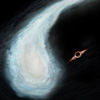 A peculiar cloud of gas, nicknamed the Tadpole due to its shape, appears to be revolving around a space devoid of any bright objects. This suggests that the Tadpole is orbiting a dark object, most likely a black hole 100,000 times more massive than the Sun.
A peculiar cloud of gas, nicknamed the Tadpole due to its shape, appears to be revolving around a space devoid of any bright objects. This suggests that the Tadpole is orbiting a dark object, most likely a black hole 100,000 times more massive than the Sun.
Feb 16th, 2023
Read more
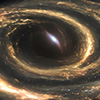 Searching through existing data spanning 9 billion years, physicists have uncovered the first evidence of 'cosmological coupling' - a newly predicted phenomenon in Einstein's theory of gravity, possible only when black holes are placed inside an evolving universe.
Searching through existing data spanning 9 billion years, physicists have uncovered the first evidence of 'cosmological coupling' - a newly predicted phenomenon in Einstein's theory of gravity, possible only when black holes are placed inside an evolving universe.
Feb 15th, 2023
Read more
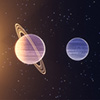 Astronomers have long been aware that planetary systems are not necessarily structured like our solar system. Researchers have now shown for the first time that there are in fact four types of planetary systems.
Astronomers have long been aware that planetary systems are not necessarily structured like our solar system. Researchers have now shown for the first time that there are in fact four types of planetary systems.
Feb 14th, 2023
Read more
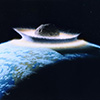 High-pressure study solves 60-year-old mystery.
High-pressure study solves 60-year-old mystery.
Feb 7th, 2023
Read more
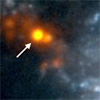 Researchers used the James Webb Space Telescope to identify the precise location of a powerful energy source hidden by cosmic dust in the luminous merging galaxy IIZw096.
Researchers used the James Webb Space Telescope to identify the precise location of a powerful energy source hidden by cosmic dust in the luminous merging galaxy IIZw096.
Feb 6th, 2023
Read more
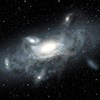 The galaxy, dubbed 'The Sparkler', is embedded in a system of globular clusters and satellite galaxies, and appears to be swallowing them as it grows.
The galaxy, dubbed 'The Sparkler', is embedded in a system of globular clusters and satellite galaxies, and appears to be swallowing them as it grows.
Feb 6th, 2023
Read more
 What happened shortly after the universe was born in the Big Bang and began to expand? Bubbles occurred and a previously unknown phase transition happened, according to particle physicists.
What happened shortly after the universe was born in the Big Bang and began to expand? Bubbles occurred and a previously unknown phase transition happened, according to particle physicists.
Feb 1st, 2023
Read more
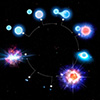 Astronomers using the SMARTS 1.5-meter Telescope uncover a one-in-ten-billion binary star system.
Astronomers using the SMARTS 1.5-meter Telescope uncover a one-in-ten-billion binary star system.
Feb 1st, 2023
Read more
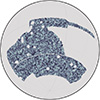 Analysis combines Dark Energy Survey, South Pole Telescope data to understand evolution of universe.
Analysis combines Dark Energy Survey, South Pole Telescope data to understand evolution of universe.
Jan 31st, 2023
Read more
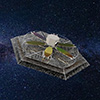 New technology may enable exoplanet discoveries previously thought impossible.
New technology may enable exoplanet discoveries previously thought impossible.
Jan 27th, 2023
Read more
 Scientists created a bound state of a proton and a K- meson and measured its mass. The data implied that it consisted of five quarks. This work may help scientists develop a theory of exotic matter that existed in the early Universe or in neutron stars.
Scientists created a bound state of a proton and a K- meson and measured its mass. The data implied that it consisted of five quarks. This work may help scientists develop a theory of exotic matter that existed in the early Universe or in neutron stars.
Jan 26th, 2023
Read more
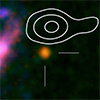 A new study has measured the cosmic age of a very distant galaxy. This discovery confirms the existence of galaxies in the very early Universe found by the James Webb Space Telescope.
A new study has measured the cosmic age of a very distant galaxy. This discovery confirms the existence of galaxies in the very early Universe found by the James Webb Space Telescope.
Jan 25th, 2023
Read more
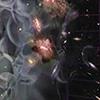 Newest data from HERA improves search for cosmic dawn radiation, tests theories of galaxy formation.
Newest data from HERA improves search for cosmic dawn radiation, tests theories of galaxy formation.
Jan 25th, 2023
Read more
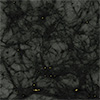 Phase transition in the early universe changes strength of interaction between dark and normal matter.
Phase transition in the early universe changes strength of interaction between dark and normal matter.
Jan 24th, 2023
Read more
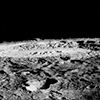 The lunar surface is covered in sand composed of metals and oxygen. By extracting the oxygen from this sand, it can be used by astronauts to breathe.
The lunar surface is covered in sand composed of metals and oxygen. By extracting the oxygen from this sand, it can be used by astronauts to breathe.
Jan 24th, 2023
Read more
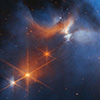 Webb has identified frozen forms of a wide range of molecules, including carbon dioxide, ammonia, and methane.
Webb has identified frozen forms of a wide range of molecules, including carbon dioxide, ammonia, and methane.
Jan 23rd, 2023
Read more
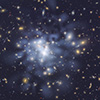 Phase transition in early universe changes strength of interaction between dark and normal matter.
Phase transition in early universe changes strength of interaction between dark and normal matter.
Jan 23rd, 2023
Read more
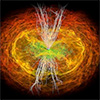 Scientists have advanced in discovering how to use ripples in space-time known as gravitational waves to peer back to the beginning of everything we know.
Scientists have advanced in discovering how to use ripples in space-time known as gravitational waves to peer back to the beginning of everything we know.
Jan 20th, 2023
Read more
 A peculiar cloud of gas, nicknamed the Tadpole due to its shape, appears to be revolving around a space devoid of any bright objects. This suggests that the Tadpole is orbiting a dark object, most likely a black hole 100,000 times more massive than the Sun.
A peculiar cloud of gas, nicknamed the Tadpole due to its shape, appears to be revolving around a space devoid of any bright objects. This suggests that the Tadpole is orbiting a dark object, most likely a black hole 100,000 times more massive than the Sun.
 Subscribe to our Space Exploration News feed
Subscribe to our Space Exploration News feed















